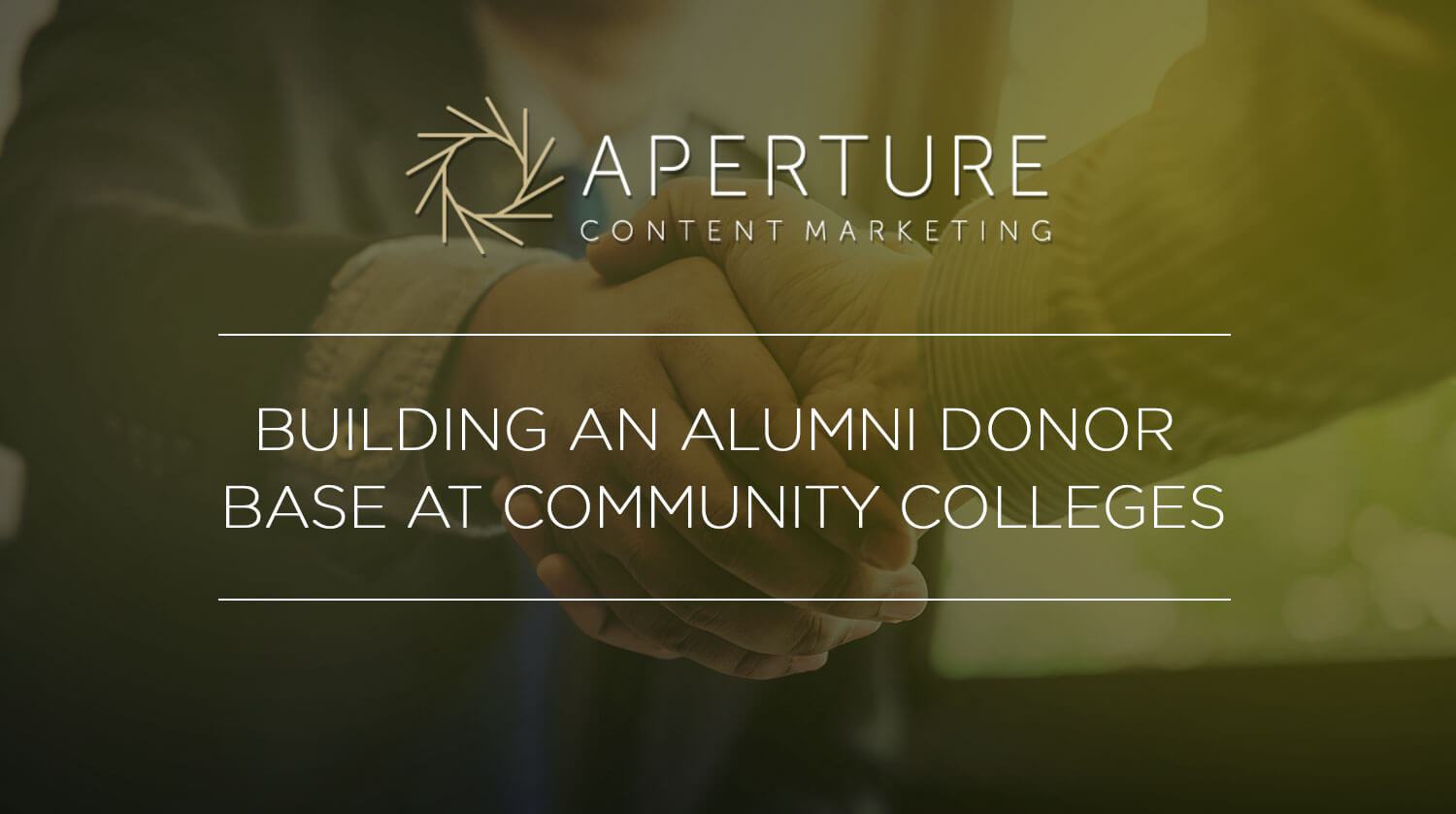Effective alumni relations programs at two-year schools
It’s not news that community college budgets are strained these days. States have been a reliable source of funding for community colleges for many years, but recent budget cuts are forcing community colleges to find ways to make up the difference. That’s why advancement professionals at community colleges have begun to embrace alumni relations more broadly.
These programs have long been a key component of funding public and private four-year institutions, but never two-year schools. However, a new study from CASE shows that, while it’s still a small part of overall community college budgets, schools are spending more time and money on alumni relations.
Paul Heaton writes in the CASE study that with 12 million students enrolled in U.S. community colleges each year, the number of potential alumni is staggeringly large. It’s not hard to see the fundraising possibilities. Yet, it’s equally true that community colleges have been reluctant to embrace alumni relations projects.
Are the alumni dollars even out there?
Community colleges may be slow to solicit support from alumni because of their student demographics. Presidents might justifiably wonder if they can rely on alumni for substantial funding, since community college students are often in a very different income bracket than students at four-year institutions.
An analysis of Education Longitudinal Study shows that 44 percent of low-income students (those with family incomes of less than $25,000 annually) attend community colleges as their first college after high school. Only 15 percent of high-income students did the same. It’s clear that most graduates won’t be making large donations immediately after graduation.
The intractable transfer problem
Another reason community colleges struggle with alumni relations projects is the high rate of transfers. When students move to four-year schools, those institutions often win their donation dollars. However, it’s important to remember alumni don’t donate more to four-year institutions simply for sentimental reasons.
Four-year colleges and universities have well-organized alumni relations offices. Students who graduate from four-year institutions will likely be contacted repeatedly for support. In contrast, they may never hear from their institution of origin. And, more often than not, donations go to the schools that solicit them.
No sports, no science, no donors?
Community colleges also lack some of the big-ticket draws at four-year institutions. College sports often bring alumni back to campus, keeping them engaged and enthusiastic. Similarly, alumni are excited to be a part of the scientific achievements at big research schools. When a university is curing cancer or winning the National Championship game, the press release writes itself.
Two-year colleges have neither multi-million-dollar research projects nor Division I sports programs. However, that doesn’t mean that they have no legacy. Students from community colleges go on to do great things, and those stories will earn the love and commitment of your alumni. It’s important to publicize those accomplishments.
Community colleges do have generous benefactors
Those same wonderful students are why you shouldn’t give up on your alumni relations efforts. Some community college graduates are both financially secure and eager to support their alma maters. Just this year, two Monroe Community College alumni, Robin and Timothy Wentworth, made a $4 million donation that will provide full scholarships to 100 MCC students each year.
While the Wentworth’s gift may be unusually large, the Monroe Community College Foundation is also running a particularly ambitious fundraising campaign. They are seeking $50 million dollars to provide scholarship support to every needy student, and so far, they’ve raised $39.5 million.
Alumni engagement is trending
According to the CASE study, the organizational commitment to alumni relations is growing. Advancement professionals are spending more time on alumni relations; there are more full-time staff handling alumni relations; and the alumni share of total giving has increased to nearly 10 percent.
Community colleges are also using more emerging technologies to reach alumni. More schools report engaging with alumni through Facebook, Twitter or LinkedIn. In particular, they are using Facebook and Twitter to solicit funds during giving campaigns.
Still, print media continues to account for a large share of alumni relations budgets, and community colleges are using newsletters, magazines and direct mail appeals at about the same rate as they did in previous surveys. These and special events remain important ways to engage alumni.
Strategies for engaging alumni
Creating a successful alumni relations program takes time and investment. However, there are three things that every school can start doing right away.
- Keep updated contact information. Although this seems basic, it does present a challenge. This good news is that now that people can be contacted via direct mail, email, and social networks, schools have been more successful at tracking, connecting, and soliciting alumni.
- Create sharable content. Nothing harnesses the power of nostalgia quite like a compelling story or picture showing familiar faces and scenes. Articles about beloved professors, fellow alums, or campus projects can provoke a powerful response.
- Embrace new technologies. Your alumni are on Twitter, and you should be too. It’s a great place to promote events, publicize fund-raising campaigns, and celebrate your students. LinkedIn especially can be a good place for communities of alumni to find each other.
Building an alumni donor base at community colleges isn’t without its challenges. Yet, as schools increasingly realize, they need to find other ways to make up for lost funding. As enrollment continues to decline, alumni relations programs may bridge the gap.


